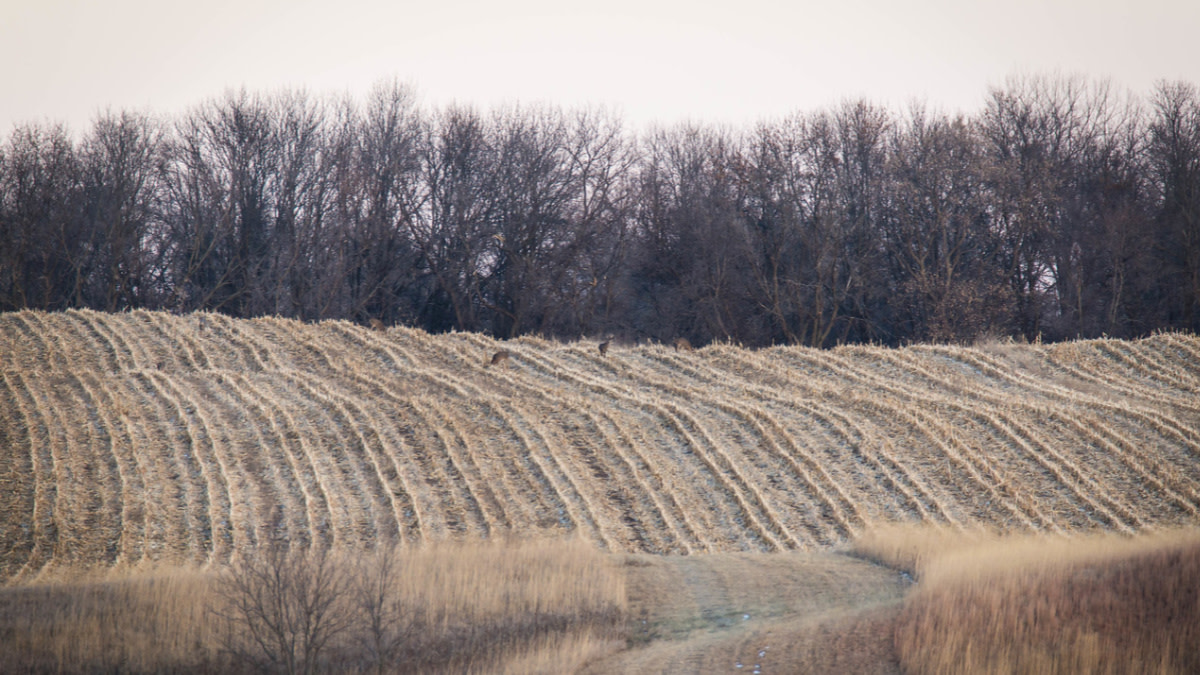
I remember the first time I ever knocked on a door for hunting permission. My hands were clammy, my voice was shaky and my speech was stumbled. I’m not entirely sure if the landowner denied my request because he didn’t want me hunting there, or if he simply couldn’t understand what I was trying to say. But I do know I learned an important lesson that day: getting hunting permission is hard.
Whether you’re a new hunter or an old hand, knowing how to gain hunting permission is an invaluable skill. As access to hunting ground becomes more competitive every year, this skill may be more important now than ever. And as evidenced by the dozens of permissions-related questions I get each month, there’s a steady desire for help with this challenge. I’ve been fortunate over the last decade to get an education on hunting permission by way of my own experiences and through interviews with dozens of guests on the podcast. From that well of knowledge, I’ve developed the system I describe below for gaining deer hunting permission, but it can be easily tweaked to work for any kind of access.
Easy Wins
When it comes to gaining hunting permission, the lowest hanging fruit comes by way of relationships. If you’re looking for new ground to hunt, the first place to start is by asking friends and family for leads.
Sometimes you’ll get lucky with this approach and find out that a long-lost friend or second cousin either owns or has access to hunting land. More often, these asks will lead to referrals to other people worth contacting. The value here lies as much in the networking as in the personal validation your contact provides. A friend of a friend is a lot more likely to get access than a stranger.
This kind of referral approach to hunting access can also work digitally. Participation in online message boards or Facebook groups can sometimes turn up hunting access when you put out the call—especially if you’re willing to engage in some kind of swap in which you exchange other hunting and fishing opportunities. If, for example, you’ve got a nice boat on Lake Erie, you might be able to barter a guided walleye fishing trip in exchange for access to someone’s hunting property in Ohio. Get creative and you just might be able to find a spot to hunt.
A Plan for Going In Cold
If your personal network doesn’t turn up any access, it’s time to try the door knocking approach. The first step in this process is to identify the specific properties you want to get permission for.
If you want to gain access for an out-of-state trip in search of big, giant bucks, you might want to look at record book data, deer-related media, or message board comments to identify which regions of a particular state are best to focus on. If instead you’re simply trying to find a place to hunt close to home, you can skip to the next step.
At this point I recommend pulling up maps—ideally something like onX, which shows aerial views along with property borders and owner information. When doing this myself, I sometimes have a general area in mind based on deer sightings or knowledge of the hunting quality in a certain county.
About six years ago, this scenario played out for me in southern Michigan. One evening in August, while taking an evening drive, I spotted a large group of mature whitetail bucks feeding in a soybean field. When I returned home that night I immediately pulled up maps and took a look at the surrounding area. I found there was a large swamp adjacent to that bean field, providing the security cover necessary to support those mature bucks. I immediately got to work putting together a list of the property owners bordering that swamp that I could later ask for permission.
When I don’t have this kind of location-specific knowledge, I’ll choose properties simply by how interesting they look on the map. Typically I’ll select properties that have high-quality security cover (swamps, timber, CRP), some kind of food source (crop fields, oak flats, orchards), and a nice diversity of terrain.
For each property I select, I’ll find the property owner name and address information either through a tool like onX or the local county GIS data. I like to pull together a list of at least five properties, more if possible. Knocking on doors for hunting permission is a numbers game. You will get turned down a lot, so make sure to give yourself enough opportunities to eventually get a “yes.”
The Preparation
Now that you’ve got a long list of properties in mind, it’s time to get to door knocking. I don’t love the door-knocking process myself. It’s uncomfortable, there’s no denying that. But in many cases it’s a necessary evil. I do have a few tricks up my sleeve to make the process less painful and more productive, however.
Most notably, I like to tackle my entire list of properties in a single day. I’ve found that the first door is always the hardest to approach, but the second is a little easier, the third is almost bearable and by the fourth you’re in the zone and things snowball from there. By knocking out the entire list of properties in one day, I only need to muster up the courage to get started once and from there I build momentum and confidence with each subsequent door.
When it comes to the asking process itself, it’s important to be thoughtful about how you dress, talk and conduct yourself. I try to dress in a casual, but clean, manner that is fitting for the given region. You don’t want to look like you’re trying to sell someone a vacuum cleaner, but you don’t want anyone thinking you’re going to rob them either. There’s an appropriate dress code somewhere in between.
I try to time my door-knocking to a period of the day when folks should be home, but not eating dinner. I also prefer daylight over dark, and early evening or midday on weekends seem to be ideal. As far as time of year for door knocking, I prefer earlier over later, but go when you can. Just try to avoid knocking right in the middle of hunting season. If you can get door-knocking in the late winter or spring, rather than asking for deer hunting permission immediately, start by asking for shed antler or turkey hunting permission. These are often easier to get a “yes” and give you an opportunity to establish rapport with the landowner that could later lead to deer hunting access.
The Ask
After knocking on a door I like to step back and give the owner some space. I think this makes for a less threatening situation than if someone were to open their door and see a tall man (in my case) looming above them. I then introduce myself with a smile, shake hands and clearly explain why I’m stopping in. My opening line usually goes something like this:
“Hi, my name is Mark Kenyon. I live just down the road. Nice to meet you. I’m sorry to interrupt your afternoon, but I’ve noticed a lot of deer out feeding in this field you own. I’ve been trying to find a place to bowhunt locally, and I was just curious if you ever allow folks to hunt here?”
From there I see where the conversation takes us. Sometimes the landowner immediately says “no” and tries to end the conversation. Other times the landowner might mention that other people hunt it already, but will continue chatting about one thing or another. In this situation, I always like to let the conversation continue since you never know how a mind might change. I’ve had numerous situations where a landowner shuts me down right out the gate, but after chatting with me for awhile, they change their tune and give me the green light or offer to double check on the other hunters.
What To Do Next
If the answer is ultimately no, I’m always polite and understanding. But I will try one more thing before leaving. This is one of my most productive tactics for gaining hunting access. Before saying goodbye, I always like to ask the landowner if they happen to know of anyone else in the area who might be worth checking in with. This will usually net me at least one more property to check on and gives me higher than average odds of gaining permission there. The biggest benefit this lead provides is a connection back to the original landowner.
When I knock on the new door, I can now lead with, “Hi, my name is Mark Kenyon, I was just down at John Doe’s house and he recommended I stop by here.” It’s amazing how much a difference this small referral can make.
On the other hand, if the original landowner I spoke with says yes, I graciously accept, show him or her my appreciation and then go about locking down important logistical matters. It’s important to make sure as many details are understood between both parties. Is this permission for bowhunting or gun hunting? Is this free permission or is the landowner expecting some kind of payment or service? Where should you park your vehicle? Are there any areas off-limits? Are there any specific times of year that the property should be left alone? All of these questions and more should be answered before trying to access or hunt the property.
Always Be Searching
Alec Baldwin famously said in the movie Glengarry Glen Ross that a salesman must “always be closing.” Change that to “always be searching” and you’ve got a perfect maxim for the modern deer hunter. Hunting permission and access is fleeting, so never get too comfortable with the spots you have.
I’m always keeping an eye out for potential hunting access opportunities, and if possible, at least once a year I’ll proactively work to gain new access, too.
Whether you hunt deer, turkeys, pheasants or squirrels, it’s always better to have too much access than too little. But very few people just luck into that kind of situation. Hunting permission requires time, diligence, persistence and most importantly, hard work.
Feature image via Captured Creative.





